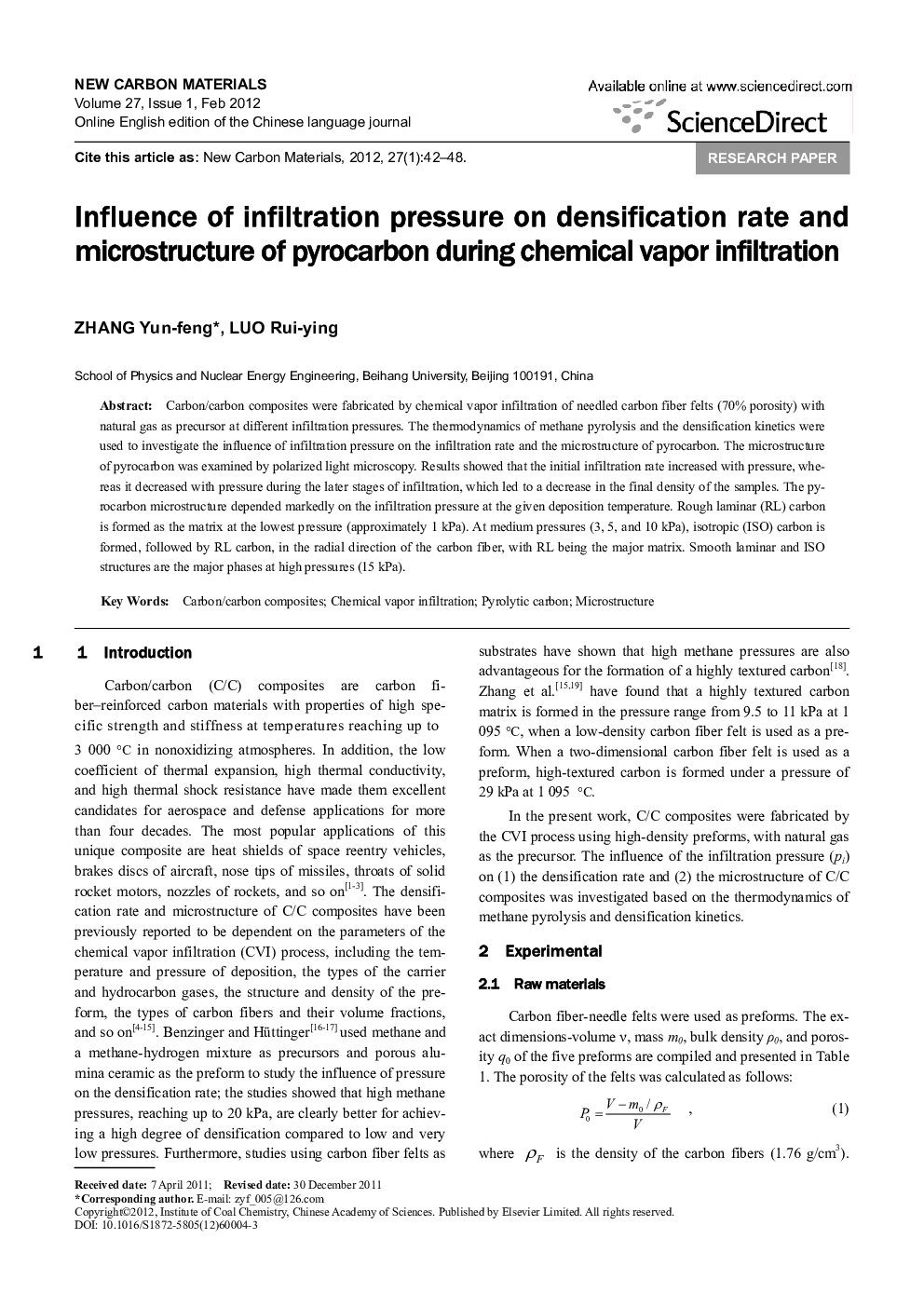| Article ID | Journal | Published Year | Pages | File Type |
|---|---|---|---|---|
| 1558391 | New Carbon Materials | 2012 | 7 Pages |
Carbon/carbon composites were fabricated by chemical vapor infiltration of needled carbon fiber felts (70% porosity) with natural gas as precursor at different infiltration pressures. The thermodynamics of methane pyrolysis and the densification kinetics were used to investigate the influence of infiltration pressure on the infiltration rate and the microstructure of pyrocarbon. The microstructure of pyrocarbon was examined by polarized light microscopy. Results showed that the initial infiltration rate increased with pressure, whereas it decreased with pressure during the later stages of infiltration, which led to a decrease in the final density of the samples. The pyrocarbon microstructure depended markedly on the infiltration pressure at the given deposition temperature. Rough laminar (RL) carbon is formed as the matrix at the lowest pressure (approximately 1 kPa). At medium pressures (3, 5, and 10 kPa), isotropic (ISO) carbon is formed, followed by RL carbon, in the radial direction of the carbon fiber, with RL being the major matrix. Smooth laminar and ISO structures are the major phases at high pressures (15 kPa).
